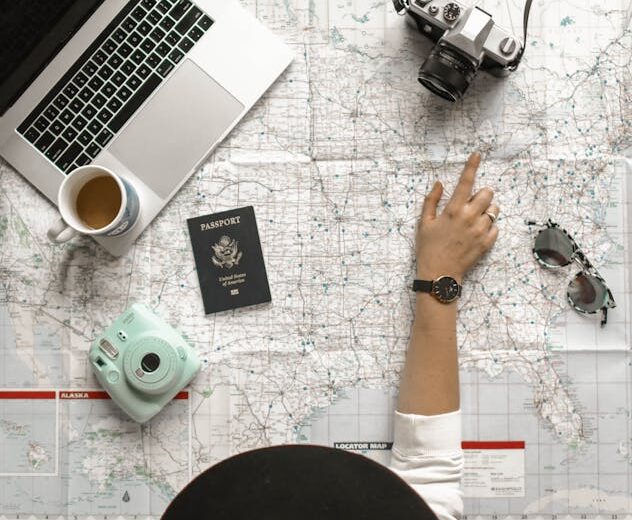How to Choose the Best UFO Photography Gear
Have you ever gazed up at the night sky and wondered about the mysteries of the universe? If you’re passionate about capturing those enigmatic moments when unidentified flying objects (UFOs) make their rare appearances, then having the right photography gear is essential. This guide will help you choose the best UFO photography equipment, ensuring your shots are not only clear but also awe-inspiring. 🚀🌌
Table of Contents
1. Introduction
2. Understanding UFO Photography
3. Essential Camera Features
4. Lens Selection for UFO Photography
5. Tripods and Stabilization
6. Additional Gear and Accessories
7. Conclusion
8. FAQs
Understanding UFO Photography
UFO photography is a unique niche that combines elements of astrophotography and action photography. It requires quick reflexes, patience, and a good understanding of your gear. The main goal is to capture clear, compelling images of unidentified flying objects, which are often seen in low-light conditions or moving at high speeds.
Before diving into the specifics of the gear, it’s essential to understand that UFO photography can be unpredictable. You never know when or where a sighting might occur. This makes preparation and the right equipment all the more critical.
Essential Camera Features
When selecting a camera for UFO photography, there are several crucial features to consider:
1. High ISO Performance
Since most UFO sightings occur at night, you’ll need a camera with excellent high ISO performance. This allows you to capture images in low-light conditions without excessive noise. Cameras with full-frame sensors typically offer better ISO performance, making them a popular choice among UFO photographers.
2. Fast Autofocus System
UFOs can move quickly and unpredictably, so a camera with a fast and accurate autofocus system is essential. Look for cameras that offer multiple autofocus points and advanced tracking capabilities.
3. Burst Mode
A camera with a fast burst mode can capture several frames per second, increasing your chances of getting that perfect shot. This feature is particularly useful when dealing with fast-moving objects.
Lens Selection for UFO Photography
The right lens can make all the difference in UFO photography. Here are key considerations:
1. Wide Aperture
Lenses with wide apertures (e.g., f/2.8 or lower) allow more light to hit the sensor, which is crucial for night photography. This helps in capturing clearer images with less noise.
2. Focal Length
While a telephoto lens is great for zooming in on distant objects, having a versatile zoom lens that ranges from wide to telephoto can be beneficial. This allows flexibility depending on the distance and size of the UFO.
3. Optical Image Stabilization (OIS)
OIS can be a lifesaver in low-light conditions, as it helps to reduce motion blur. This is particularly useful when shooting handheld in the dark.
Tripods and Stabilization
Stability is crucial in UFO photography. Even the slightest movement can ruin a shot taken at slow shutter speeds.
1. Sturdy Tripod
Invest in a sturdy tripod that can handle your camera and lens setup. A tripod with a fluid head can make panning with moving objects smoother and easier.
2. Remote Shutter Release
To avoid any camera shake when pressing the shutter button, a remote shutter release or a cable release is recommended. This tool allows you to trigger the camera without physically touching it.
Additional Gear and Accessories
While the camera, lenses, and tripod form the core of your gear, there are additional tools to enhance your UFO photography experience:
1. Extra Batteries and Memory Cards
UFO photography sessions can last several hours, so having extra batteries and memory cards ensures you don’t miss out on capturing any action.
2. Lens Cleaning Kit
Dust and smudges can ruin a shot. A basic lens cleaning kit will keep your lenses in top condition.
3. Star Map or App
Understanding the night sky can help you anticipate UFO movements. A star map or a mobile app can be invaluable tools.
Conclusion
Choosing the best UFO photography gear is about balancing quality with practicality. While high-end equipment can offer better results, understanding and mastering your gear is just as important. With the right setup, you’ll be ready to capture those fleeting moments of extraterrestrial wonder. So, gear up, keep your eyes on the skies, and happy photographing! 🌠
FAQs
What is the best camera for UFO photography?
The best camera for UFO photography typically has excellent low-light performance, fast autofocus, and a robust burst mode. Full-frame cameras like the Canon EOS R6 or Sony A7 III are popular choices.
Do I need a special lens for UFO photography?
A versatile zoom lens with a wide aperture is ideal for UFO photography. Lenses like the Canon RF 24-105mm f/4L or the Sony FE 24-70mm f/2.8 GM offer flexibility and performance.
How can I improve my chances of capturing a UFO?
Stay prepared with your gear ready, learn to anticipate UFO movements using a star map, and practice shooting in low-light conditions to improve your skills.
Looking for a side hustle
Check out one of the best around atm
